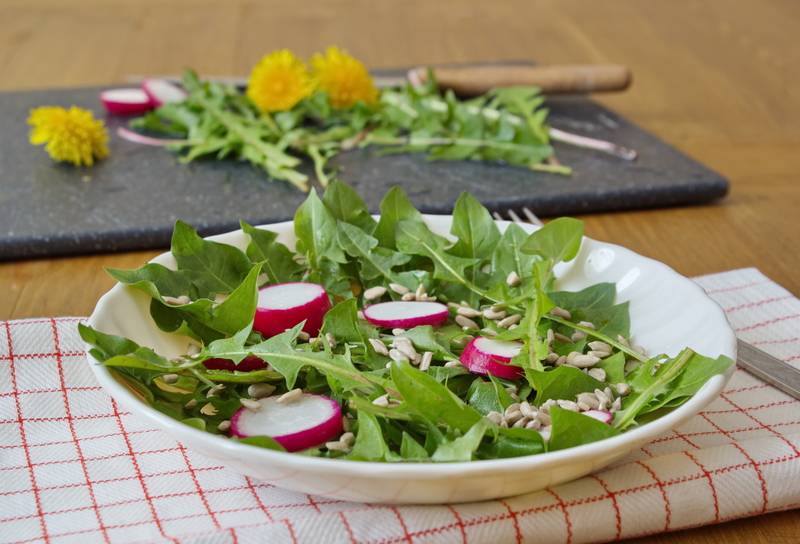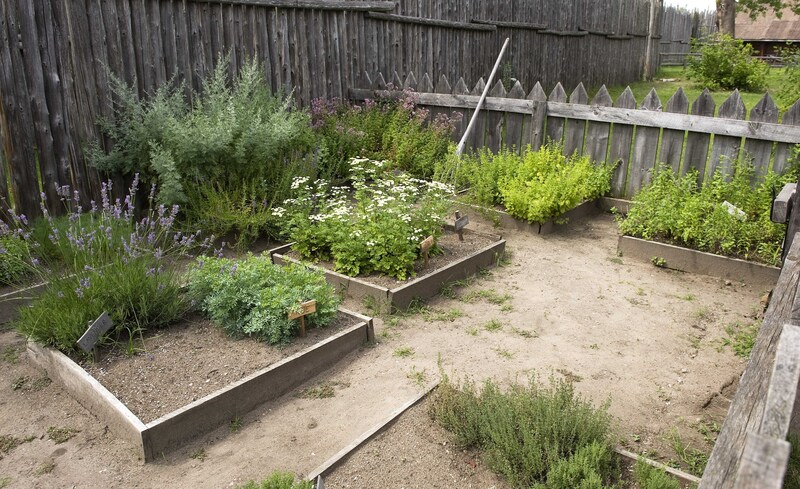Gardening: Cultivating Hope Against Climate Challenges
Posted on 14/08/2025
Gardening: Cultivating Hope Against Climate Challenges
Gardening has long been a cherished activity across cultures and continents. However, in the wake of rising global temperatures, unpredictable weather, and environmental degradation, gardening has also become a beacon of hope. Eco-friendly gardening practices not only help us produce food and beautify our spaces, but they also contribute significantly to climate resilience and ecological restoration. In this comprehensive article, we'll delve into how gardening is evolving to address climate challenges, practical solutions for resilient gardens, and how you can be part of this green revolution.
Understanding the Climate Crisis and Its Impact on Gardens
The climate crisis manifests in diverse ways: heatwaves, prolonged droughts, unexpected frosts, flooding, and increased pest pressures. Each of these challenges directly affects traditional garden planning and crop success. For gardeners, these changes necessitate a shift in mindset, viewing gardens less as static landscapes and more as dynamic ecosystems that must adapt and thrive in adversity.
Key Climate Challenges for Gardeners
- Extreme Temperatures: More frequent heatwaves and unseasonable frosts pose threats to plant survival.
- Water Scarcity: Drought and erratic rainfall make water management crucial for sustaining plants.
- Soil Degradation: Heavy rain, erosion, and chemical use diminish soil structure and fertility.
- Rising Pest and Disease Incidence: Milder winters allow more pests and pathogens to thrive year-round.
- Loss of Biodiversity: Habitat disruption reduces pollinator and beneficial insect populations.
Recognizing these risks is the first step in reimagining gardens as climate-smart sanctuaries. Let's explore how gardening is being transformed into a powerful tool for cultivating hope and resilience.

Resilient Gardening: Strategies for a Changing Climate
Resilient gardening isn't just about growing food or flowers; it's about creating healthy ecosystems that support nature and humanity alike, even in the face of adversity. Below are vital strategies for climate-resilient gardening.
Diversify Your Garden
One principle of climate-smart gardening is diversification. Growing a wide range of plant species reduces vulnerability to pests, diseases, or weather extremes wiping out your entire garden.
- Plant Varieties: Grow local and heirloom varieties that are adapted to your region's conditions.
- Companion Planting: Mix flowers, herbs, and vegetables to improve pollination, repel pests, and enrich soils.
- Agroforestry: Add trees and shrubs for shade, windbreaks, and improved microclimates.
Soil Health: The Foundation of Climate-Ready Gardens
Healthy soil is a garden's best defense against climate disruptions. Rich in organic matter, resilient soils absorb rain, withstand drought, and nurture robust plant life.
- Composting: Turn food scraps and yard waste into black gold that returns nutrients to the earth.
- Mulching: Use straw, leaves, or wood chips to lock in moisture, suppress weeds, and regulate soil temperature.
- No-Till Practices: Minimize digging to preserve soil structure, promote microbes, and prevent erosion.
- Cover Crops: Plant legumes or grasses in the off-season to enrich soil and guard against runoff.
Water-Wise Gardening
Water management is a cornerstone of sustainable gardening, especially as droughts and unpredictable rain patterns become common. Adopt these techniques for water-efficient gardens:
- Rainwater Harvesting: Collect roof runoff in barrels for later use in dry spells.
- Drip Irrigation: Direct water to the roots, reducing waste and evaporation.
- Soil Moisture Sensors: Automate watering schedules to prevent both under- and overwatering.
- Xeriscaping: Incorporate drought-tolerant plants and groundcovers.
Protecting and Supporting Pollinators
Gardens brimming with pollinators are healthier and more productive. However, climate change and pesticides threaten bees, butterflies, and other vital creatures.
- Grow Native Flora: Local flowers provide critical pollen and nectar sources.
- Minimize Pesticides: Opt for natural pest control like neem, insecticidal soap, or predators (ladybugs, lacewings).
- Habitat Creation: Add bee houses, butterfly puddling stations, and mixed-height plantings.
Even a small pollinator-friendly garden can serve as a vital refuge in urban and suburban landscapes.
Gardening as a Community Response to Climate Change
Community and urban gardening are inspiring movements that underline gardening's role in resilience. By transforming lots, rooftops, and balconies into green oases, communities foster food security, improve mental health, and sequester carbon--all while uniting people.
Benefits of Collective Gardening Initiatives
- Urban Heat Mitigation: Green spaces cool cities and reduce energy demand.
- Flood Prevention: Permeable surfaces absorb rain, preventing runoff and erosion.
- Food Justice: Community gardens provide fresh produce in food deserts.
- Environmental Stewardship: Education programs teach climate solutions hands-on.
- Social Resilience: Collaboration builds neighborhood trust and resource sharing.
Popular Models of Community Gardening
- Allotment Gardens: Individuals cultivate assigned plots in communal spaces.
- School Gardens: Educational programs help students learn about climate, ecology, and nutrition.
- Therapeutic Gardens: Green spaces in hospitals and care centers foster recovery and wellbeing.
- Urban Farms: Larger-scale farming operations feed neighborhoods and provide green jobs.
Climate-Resilient Plant Choices for Modern Gardens
As climate conditions change, so should our plant palettes. Climate-adaptive gardening means seeking out species and varieties that can handle new extremes while still serving our needs and enriching biodiversity.
Top-Recommended Plant Types
- Drought-Tolerant Perennials: Lavender, Russian sage, yarrow, and coneflowers thrive in low water.
- Deep-Rooted Vegetables: Okra, sweet potatoes, and asparagus access moisture deeper underground.
- Resilient Fruit Trees: Figs, jujubes, and cherries tolerate heat and poor soils.
- Native Wildflowers: Attract local pollinators and require minimal input.
- Dynamic Groundcovers: Thyme, sedum, and creeping phlox crowd out weeds and conserve soil.
Consult local extension offices or native plant societies for lists tailored to your specific region.
The Emotional and Psychological Benefits of Gardening Amid Climate Change
It's easy to feel overwhelmed by grim climate headlines. But gardening acts as a therapeutic bridge to hope. Tending to plants and watching life flourish offers a sense of purpose, resilience, and connection to nature, even in uncertain times.
- Stress Reduction: Gardening lowers cortisol levels and promotes relaxation.
- Community Connection: Shared gardening initiatives foster belonging, reducing anxiety.
- Empowerment: Producing your own food and flowers grants agency in a changing world.
- Nature Engagement: Daily contact with green spaces enhances mental health and stimulates creativity.
Hope is a powerful antidote to climate despair. Each seed sown is an act of optimism--a tangible step toward a healthier, more beautiful future.
Cutting-Edge Solutions in Eco-Friendly Gardening
Innovation in gardening is accelerating, providing powerful new tools for climate adaptation. Explore these sustainable gardening solutions:
- Permaculture Design: Mimics natural ecosystems to create self-sustaining, low-input gardens.
- Rain Gardens: Specially designed beds collect and filter stormwater, reducing runoff.
- Vertical and Container Gardening: Maximizes space and allows gardening in urban settings.
- Regenerative Agriculture: Goes beyond sustainability by improving soil, water, and wildlife habitat.
- Smart Tech Integration: Tools like remote sensors, timers, and climate modeling apps help fine-tune garden care.
How to Start Your Own Climate-Resilient Garden
Ready to cultivate hope in your own backyard? Here's a practical roadmap for transforming your garden into a climate-resilient haven:
1. Assess Your Site
- Observe sun, wind, water flow, and soil conditions throughout the year.
- Check for potential hazards (flood zones, drought, erosion-prone areas).
2. Plan for Resilience
- Choose native, drought-resistant, and pest-tolerant plants.
- Include a mix of perennials, annuals, trees, and groundcovers.
- Design for water movement with swales, berms, and rain gardens.
3. Build Healthy Soil
- Start a compost bin or pile to recycle organic waste.
- Mulch all beds generously to protect and enhance soil.
4. Create Habitat and Support Pollinators
- Plant a variety of season-long blooming flowers.
- Add woodpiles, rocks, and small water features for shelter and drinking.
5. Practice Smart Water Management
- Install rain barrels and use drip irrigation where feasible.
- Group plants by water needs ("hydrozoning") to avoid waste.
6. Share and Learn
- Join a local garden club, CSA, or online groups to share knowledge and resources.
- Participate in seed exchanges focused on climate-adapted varieties.

Gardening as Climate Action: Your Contribution Matters
If you're wondering whether your small garden can really make a difference in the fight against climate change, remember: Collective action scales. Every pollinator planted, every patch of healthy soil, and every drop of water conserved adds up.
Some ways your gardening efforts contribute to climate resilience include:
- Sequestering Carbon: Plants and soils capture atmospheric CO2, storing it instead of releasing it.
- Boosting Biodiversity: Gardens create habitats for insects, birds, and other wildlife.
- Building Local Food Systems: Growing your own food reduces transportation emissions and packaging waste.
- Demonstrating Solutions: Your successes (and failures) inspire others to join the green movement.
Conclusion: Growing Hope for a Greener Tomorrow
In the face of climate challenges, gardening remains a powerful, accessible solution. By prioritizing resilient practices--diverse planting, soil regeneration, water conservation, and community action--gardeners are cultivating not just plants, but hope itself. Every adapted backyard, every bloom, and every green space signals a commitment to restoring and sustaining our planet.
If you're new to gardening or a seasoned grower, your efforts matter. There's joy and purpose in each seed, in every patch of living green--proof that together, we can weather any storm and cultivate a brighter, more resilient future for generations to come.
Start your own journey today--dig in, grow resilience, and witness the ripple of change. Gardening isn't just a hobby; it's a hopeful act of climate action.

